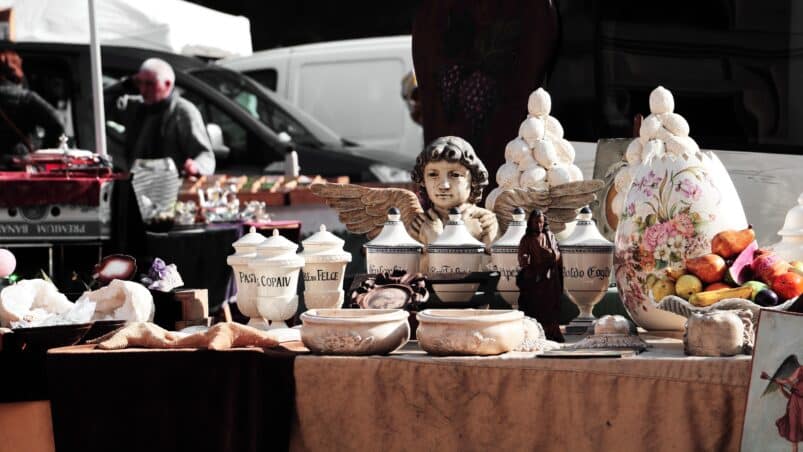“How to strengthen the fight against illicit trafficking of cultural property?” was the question the UNESCO conference in partnership with the European Union tried to answer last June. Three 2022 European Heritage Youth Ambassadors had the chance to attend the conference, and share their experiences. In the first article of this series, Gaëlle Stephan reports on how the conference’s first-panel discussion on Interregional Cooperation expanded on the fight against illicit trafficking of cultural property beyond Borders. And why it is a battle worth fighting for.
Be it through terrorist acts or pillaging, cultural heritage is trafficked, which threatens the physical evidence of humanity’s intellectual existence. The disappearance of material culture, worsened by armed conflict, is a disastrous phenomenon as cultural artefacts turn into aims of attack or plundering to dishearten specific communities or even entice global attention.
“It’s like bringing home a relative”, said Corrado Catesi, coordinator of the Works of Art Unit at Interpol, during the conference [1].
Normally, people are never asked why they would choose such jobs or careers. According to Catesi, the reason that allows him to carry out a “not so normal” police work is driven by his passion. A passion that was born by working as a Carabiniere and by looking at his sons, for whom he protects heritage he argued.
For him, fighting organized crime is a great solution against illicit trafficking of cultural property for when an object of art is recovered and brought back to the community from whom it was stolen, is comparable to the return of a relative home. Catesi also adds during the panel discussion that the fight he undertakes in his daily work is an act of incredible importance and both a question and work of passion.
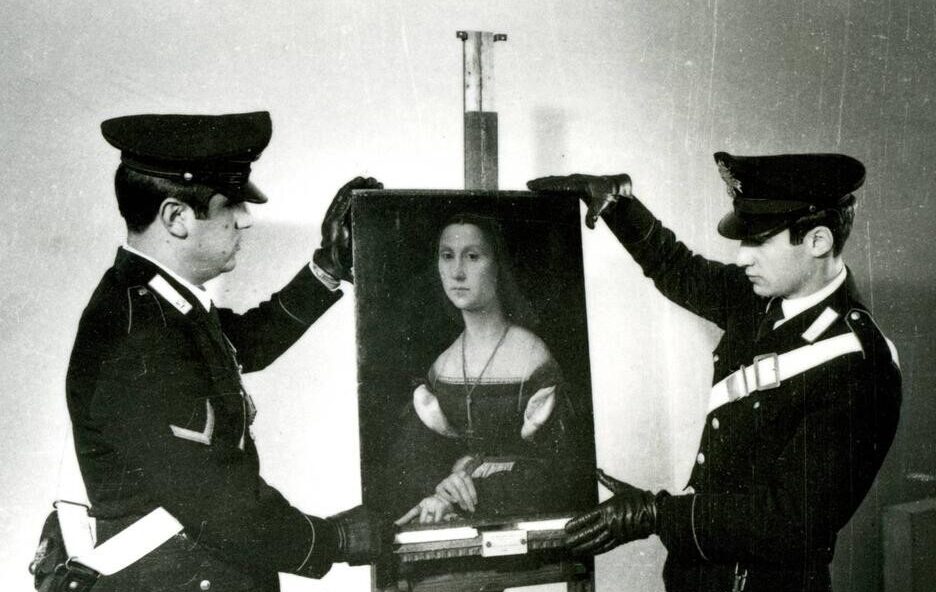
Saving Souls or Safeguarding Cultural Soles?
Mostly, the exploitation of cultural properties is utilized to support numerous outrageous purposes going from peculiar personal profit to furthering military actions. In such circumstances, international organizations, governments, and agencies are mobilized to curb the illicit trafficking of cultural artefacts and properties. The mobilization can go as far as organizing international symposiums, installing policies, ratifying conventions, and pushing for multinational collaborations to reduce this ruinous phenomenon.
In the discussion surrounding the fight against illicit trafficking of cultural property, whether in armed conflict or in times of peace, two opposing views are continually raised in this regard. The first, being less common, advocates for parallel protection of people and heritage whilst the second, being more conventional and resistful, considers saving human lives that are in danger, as a more valuable cause.
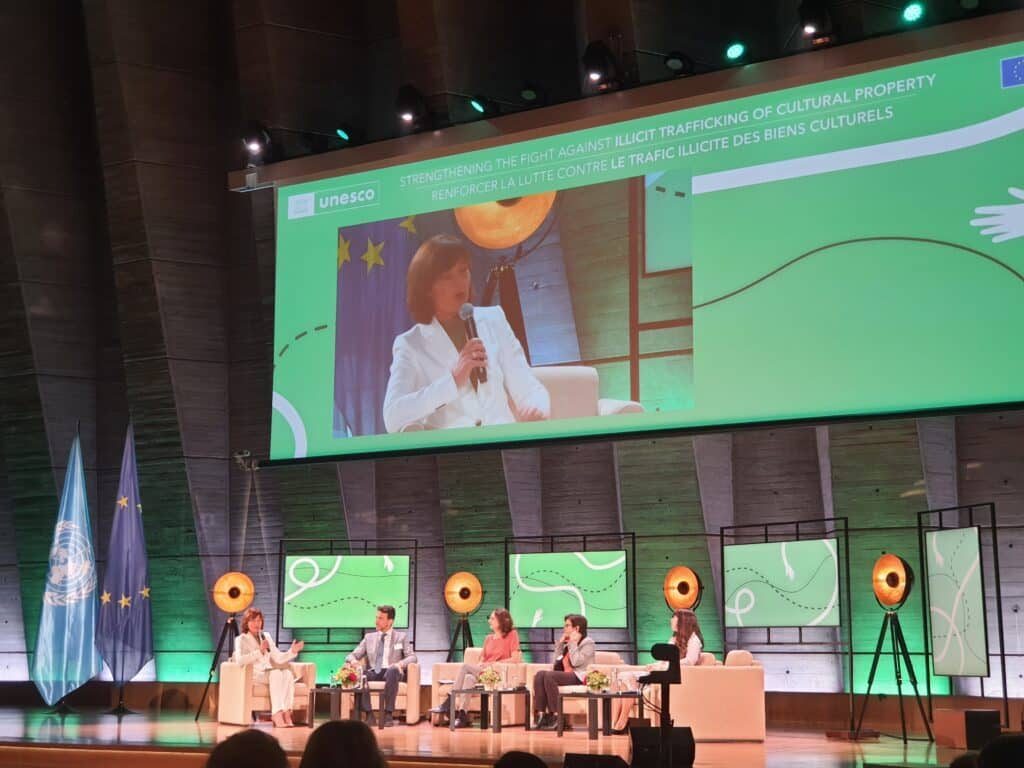
Usually, the resisters support their view by arguing that humanitarian causes carry more importance than dead stones and lifeless artefacts. At first glance, and without contextual and situational information, this argument sounds plausible. Therefore, the motives and causes for such a fight sound unjustifiable; however, the protection of both the people and heritage is nothing but the heads and tails of the same coin.
Cultural heritage, at large, is part of the shared legacy of all humanity and the manifestation of the cultural trail that was carved by the footsteps of our common ancestors; this is why it is important to understand the intentions behind the allocation of enormous funds and the devotion of significant resources to safeguard trafficked cultural properties.
The goal here is to examine some interrogations such as why the fight against illicit trafficking of cultural property is inevitable, why it is important that we become aware and part of this conversation, and why we need to take action in stopping this phenomenon. Answering the “Whys” becomes therefore key to being able to examine the extent to which the current practices align with the best ideals.
Want to know more about the underlying challenges? Read Léa Guillemant’s article here.
Rationalizing the Irrational
As a start, it will be useful to refer to the distinction made by Professor Erich Hatala Matthes [2] between what he calls the Humanitarian and the Antiquarian Views regarding the safeguarding of material heritage. According to Matthes, the people supporting the Humanitarian View deem the devotion of resources, to save cultural artefacts, objectionable when human lives are at stake. As for those opposed, returning antiquities is deemed the utmost priority regardless of the ongoing dangers jeopardizing human lives.
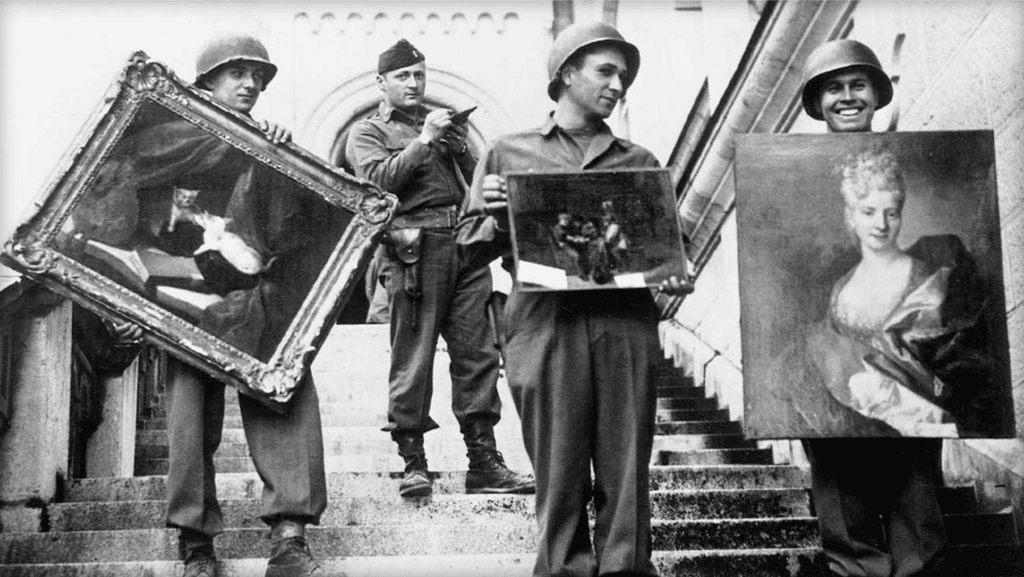
The latter indeed sounds radical and irrational. Nonetheless, the Antiquarian View is not in any way, indifferent to the importance of human life in comparison to the importance of cultural properties. Quite the opposite, its advocates claim that both rescuing culture and rescuing lives are intricately connected. This being said, sympathizing with the protection of cultural properties becomes compatible with compassion, which is naturally felt for the loss of human life.
Cultural Compassion, a Power of the Mind
On a similar note, the British Philosopher Mary Midgley [3] treats compassion for nonhumans as opposed to a rare fluid that is only used for exceptional circumstances, but rather as a habit that grows and improves with repetitive use. To better elucidate the previous analogy, Midgley compares the habit of compassion to intelligence, also a power of the mind, by associating similarly the latter with fluid that increases and develops with every pouring. In other terms, this means compassion should be rather considered as a resource that grows each time it is used, the same way smart and effectual individuals do not economize on intelligence.
By objecting to the repartition of wealth and resources such as time, money, and compassion to support the fight against illicit trafficking of cultural properties, the battle becomes an object of moral concern to those who believe in the Humanitarian View. This belief is justified in their opinion for people around the world are deemed to suffer from events that are “more tragic”.
That might be true; however, the concern of the Antiquarian View supporters is not with the cultural artefacts for their sole artistic and aesthetic values, but rather for the emotional values that are embodied in those objects. These material manifestations of culture convey, largely, identity-related models to specific communities who culturally connect with them; hence their great existential value.
Disappearing Heritage
The communities whose cultural artefacts are endangered, looted, and pillaged do experience distressing emotions towards their stolen objects. For them, these invaluable properties are part of their life, pride, and soul. Therefore, the loss of these connections can lead to their cultural erasure, destruction, or even genocide, particularly in conflict areas.
For instance, it would be impossible to mention the Rosetta Stone, without thinking directly of Egypt; however, this invaluable treasure is not currently found where it truly belongs. One of the greatest artefacts of all time, for it was the key to deciphering the Egyptian hieroglyphs, is currently found in the British Museum, away from the communities who uninterruptedly inhabited Egypt and whose modern culture incorporates to a great extent the ancient Egyptian literature and heritage.
Being able to cite several examples of this kind is problematic. This is why it is essential that we, as global citizens, act as a collective to stop the looting of material culture and stop being accomplices to such crimes by being silent, for “If you are neutral in situations of injustice, you have chosen the side of the oppressor”, as stated by the Nobel Peace Prize winner Desmond Tutu.
What would concrete measures look like? Read Jasna Popović’s contribution here.
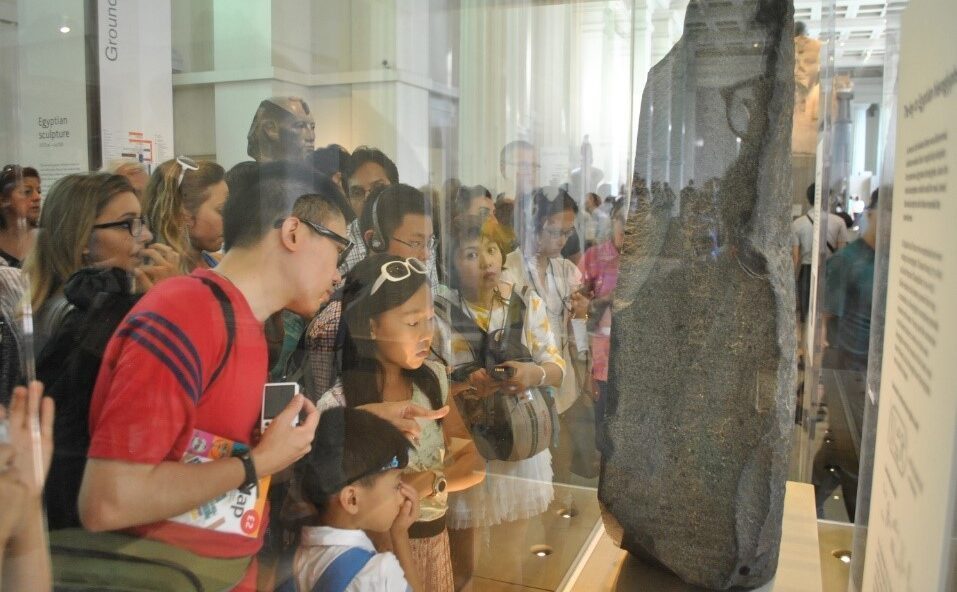
Humans are certainly misguided when considering compassion as an uncompromising emotion and when thinking that the fear of losing culture ousts the fear of losing human life. The repartition of compassion and the repartition of resources are interdependent, inseparable, and compatible as concern generates action, the action generates media coverage, and media coverage, in turn, generates international attention and assistance that will help in reporting the plundering of material culture.
Finally, understanding the “Whys” behind this fight helps in sensitizing people on this noble cause and encourages them to take part in the fight against the illicit trafficking of cultural property and to work hand in hand alongside the international community to save people’s heritage and dignity, more or less à la Carmen Sandiego.
References
[1] Catesi, C. 2022. Interregional Cooperation: Fighting Illicit Trafficking Beyond Borders [Panel discussion]. Strengthening the Fight against Illicit Trafficking of Cultural Property, 9 June, UNESCO HQ Paris.
[2] Matthes, EH. 2018, ‘Saving Lives or Saving Stones? The Ethics of Cultural Heritage Protection in War ‘, Public Affairs Quarterly, Vol. 32, No. 1, pp. 67-84.
[3] Midgley, MB. 1983, Animals and Why They Matter, University of Georgia Press, Athens.
About the author
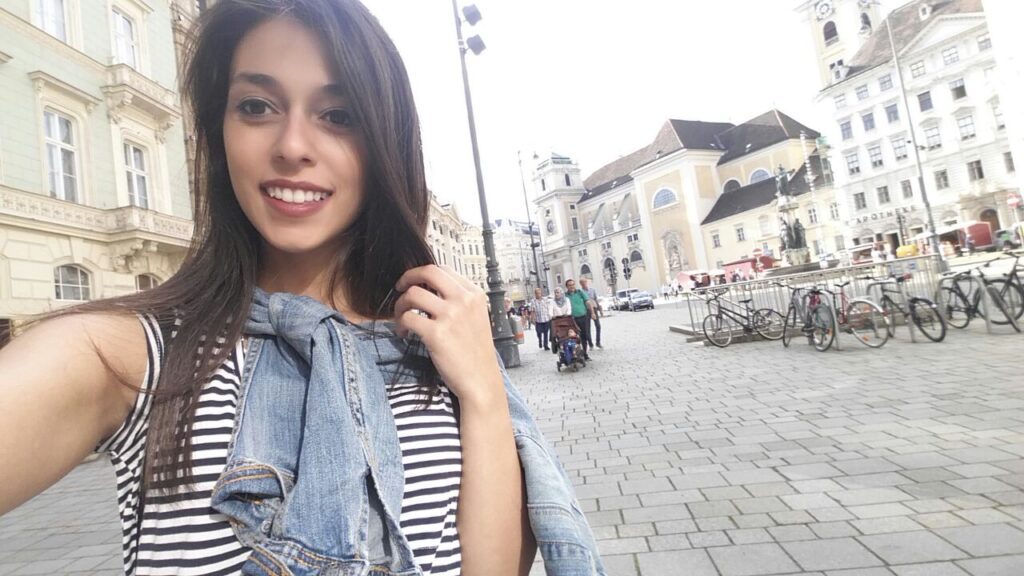
Gaëlle Stephan is an Architect and a Heritage Professional. She studied architecture at the Holy Spirit University of Kaslik, Lebanon and pursued her second master’s degree in World Heritage Studies at the Brandenburg University of Technology Cottbus-Senftenberg, Germany. Believing firmly that a deeper look into society will provide us with a better understanding of heritage, she has employed her academic background to stretch conventional definitions and to examine the relationship between Cultural Heritage and Fashion.

